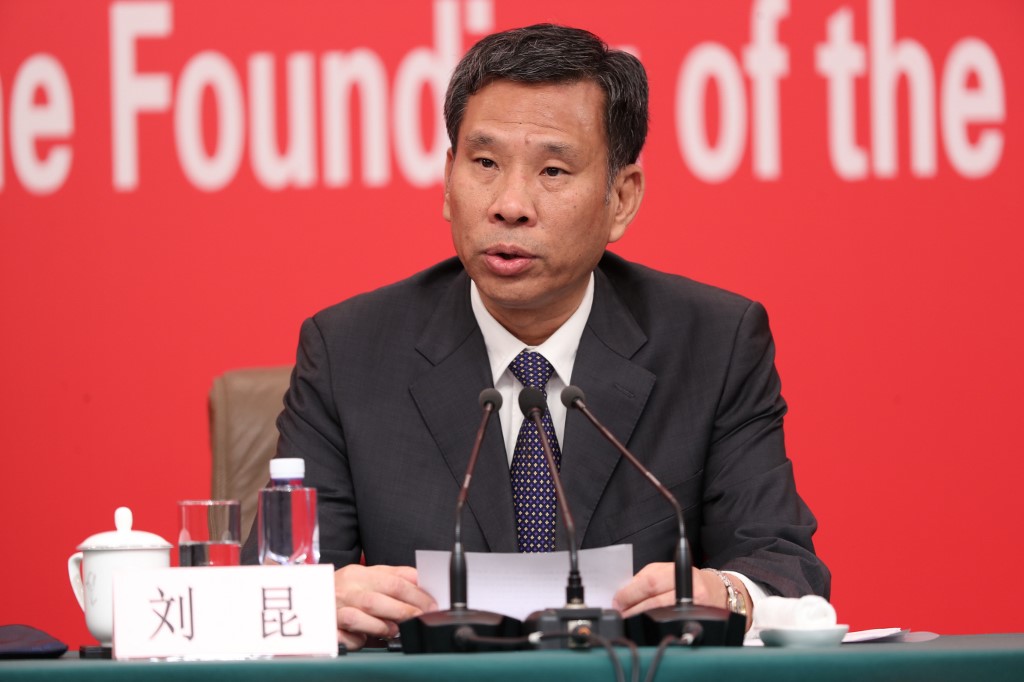(ATF) – In 2019, the bond market in China issued a total of 44.43 trillion yuan (US$6.39 trillion) in a variety of bond categories – an increase of close to 3% over 2018 and nearly 4 percentage points up from 2017.
New bond issues in the interbank bond market totalled 40 trillion yuan and accounted for 90% of total bond market issuance. This is still the main venue for China’s bond sales. In order to maintain responsible market liquidity and support banks’ issues of perpetual bonds to supplement capital, the People’s Bank of China (PBOC) restarted issuing central bank bills in February and launched the central bank bill swap (CBS) operation.
This year will see issues of corporate bonds, medium-term notes, ultra-short-term financing bonds, short-term financing bonds for securities companies, non-financial corporate asset-backed notes, and non-public targeted debt financing instruments increased significantly year-on-year.
There is a special interest in provincial-level bonds in 2020 because of the slowdown caused by the coronavirus epidemic.
At the end of 2019, the size of the main bond stocks in China’s bond market reached 96.23 trillion yuan, an increase of nearly 16% over the previous year. The scale has continued to expand, and China became the second largest bond market in the world after the United States.
The Covid-19 epidemic is having a similar effect this year as the SARS outbreak in 2003, which caused several months of economic pain. But China expects it will bounce back, as it did after SARS once the outbreak passes its peak.
Steady growth tipped in bond market
So, what are future developments and trends in China’s bond markets in 2020? Reports issued by credit ratings insiders give some answers:
Firstly, the bond market is expected to maintain steady growth. While downward pressure has increased on the economy, the government’s Central Economic Work Conference in December 2019 clearly proposed to continue implementing a sound monetary policy, while maintaining reasonable and sufficient liquidity, reducing social financing costs, increasing manufacturing with medium- and long-term financing, and easing financial pressure on private and small, medium and micro-enterprises. Market liquidity is expected to remain reasonable and accommodative in 2020, with the broad credit structure tipped to continue, and interest-rate levels expected to decline slightly, so the issuance of bonds is likely to see a steady increase.
Secondly, given the background of stable infrastructure and stable levels of investment, the amount of local debt issues will increase, while the speed of local government bond issues will be accelerated, and the role of local debt in supporting local construction and stable investment will be exerted.
Thirdly, in order to support the high-quality development of a private economy, China will further increase its support for bond financing of private enterprises, and actively adopt various methods such as special bailout bonds, directional convertible bonds, and credit risk mitigation tools to support private enterprises in the bond market financing. In 2020, the scale of private enterprise bond financing is expected to rise.
Fourthly, policy support encourages bond issuance in green, technological innovation and other fields, which will promote the growth of bond issues in related fields.
After the Spring Festival, the central bank maintained reasonable and sufficient market liquidity through open market operations, and the level of future market interest rates was significant. But the probability of market influence in China has declined, which is conducive to bond issuance. At the same time, the central government and other regulatory agencies have issued documents requiring the bond market to help prevent and control the epidemic. But on the whole, the impact of the epidemic on the bond market is limited.
Increased transparency
Big changes to transparency rules lie ahead. Relevant systems for the bond market are constantly being improved and supervision continues to be strengthened. In recent years, supervisory authorities have adopted a series of measures to improve bond market mechanisms and strengthened supervision by boosting information disclosure, risk management and control, and investor protection.
The new “Securities Law” will be implemented in the Spring of 2020 – with a securities issuance registration system, simplifying the conditions for corporate bond issuance, strengthening the management of bond information disclosure and investor protection.
This should boost China’s bond market to global standards and beyond. The bond market will be managed under themes of “Marketisation, legalisation and internationalisation” to improve the quality of bond market development. Generally speaking, the supervisory authorities will continue to strengthen coordination and coordination in the future. More detailed rules for the issuing and trading of bonds may be introduced.
So China’s bond market will continue to accelerate the pace of opening up, while it also opens up of the financial industry as a whole.
The bond central depository (CSD) is expected to achieve interconnectivity. Foreign investors will be actively encouraged to invest in China’s bond market. The number and scale of overseas investors who participate is expected to continue to grow.
Also, in July 2019, the Stabilisation Commission announced a series of policy measures to further open up the financial industry, including allowing foreign institutions to conduct credit ratings business in China, which can target all types of bonds in the interbank market and the exchange bond market.
Foreign agencies allowed in ratings sector
The China-US trade agreement signed on January 15, 2020 also clarified the opening of the ratings sector, so more foreign agencies will participate in China’s rating industry in the future, and the degree of competition will grow dramatically.
Default events will continue to occur, and risk management and follow-up resolution mechanisms will be improved. With adverse effects of the Covid-19 epidemic, China’s economic growth may continue to slow down, so deeper economic restructuring and defaults in the bond market will inevitably occur, as credit risks for SMEs and consumer companies rise.
This year, the total repayment volume of major credit bonds in China’s bond market may exceed 10 trillion yuan – a considerable increase compared with about 9.28 trillion yuan in 2019, as the pressure on debt repayment is greater.
In December 2019, the central bank and other departments jointly issued the “Notice on the Default Disposal of Corporate Credit Bonds (Draft)”, clarifying the principle of bond default disposal, and further enriching market-oriented bond default disposal methods. In the future, China will further try to prevent and control risks of the debt market by strengthening the supervision of credit bond duration, strengthening the supervision of market intermediaries, promoting the development of credit derivatives, and improving the post-default disposal mechanism.
We should note that 2020 is the end of the 13th Five-Year Plan. In macro policy terms China will continue to focus on stable growth, minimising the negative impact of the coronavirus on economic growth. A stable, flexible and moderate monetary policy will continue to provide reasonable and adequate liquidity for the bond market and stable fiscal policy. The Communist Party of China says “credit risks are generally controllable.”
So, what are the policy changes and bond market strategies under the influence of the coronavirus epidemic?
Suzhou Securities’ solid-income analyst Li Yong said that the short-term impact of the epidemic will be fundamental, with the economy greatly affected in the first quarter. The central bank’s recent monetary policy was loose – the central bank launched a 1.7-trillion yuan offensive with a massive reverse repurchase on February 10 and 11.
At the same time, LPR will drop by 10% in February. It is expected that similar moves will take place in the middle of the month. It believed the bond market would be hard to predict until things settle. Due to the current high interest rate spread and strong monetary policy protection, the short-term is expected to maintain a relatively low level of stress, until later in the year.
Hope for rebound from mid-year
The impact of the epidemic will continue until the second quarter, but after the economy could rebound significantly, and there may be an easing of monetary policy. But the epidemic is still spreading and its spread is stronger than SARS.
So, the market’s attitude of risk aversion is unlikely to fall in the short term. From a policy perspective, analysts say that fiscal efforts should be further strengthened and focus on tax reduction and an expected increase in expenditure. In terms of monetary policy, short-term liquidity will be boosted after the end of the “holiday” – with hedging of funds due to maturity, and targeted reductions or general reductions added in medium- term liquidity.
Other policies, such as to ensure stable prices, or strengthen control of the epidemic spread to prevent external concerns from intensifying, leading to a sharp drop in external demand would be bad. Subsidies to companies, policy support to prevent layoffs and other events, and control of unemployment to a certain level should help maintain stability in China, they said.
























